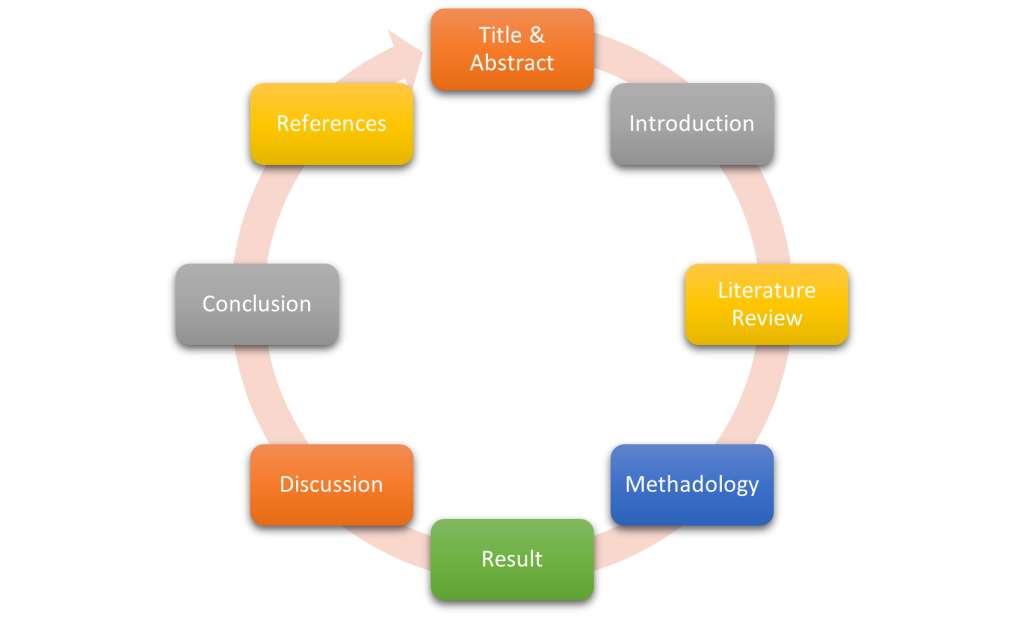Do you, too, often say – Google this, Google that, and still don’t pause to wonder where all that information actually comes from? We mean, doesn’t it bother you who these people are doing the research, and how do they constantly provide us with such detailed information?
The single answer to all these questions is expert scholars.
When a person who knows how the step-by-step approach of framing a research paper works applies it, the results speak for themselves. So, let’s hear from these experienced professionals on how to conduct research, which is not only readable but also genuinely impactful.
Research Writing 101: Let’s Figure Out Its 8 Steps
The process of having a question and then digging through layers of information (as proof) to conclude is called research. In short, this journey begins with a moment of curiosity and then compels the researcher to learn and explore the topic. Therefore, the investigators continue to verify facts and build a strong foundation for their study.
Then, once they find solid grounds and a direction to follow, they start forming conclusions. However, it doesn’t end here. The next phase is to present whatever they have discovered in a way that others can easily read, understand, and benefit from. So, this is the exact moment where research turns into research writing.
And while it may seem straightforward to you, it is actually a detailed and demanding process because it involves organizing thoughts to find the right structure. In the meantime, you must also ensure that the text flows logically. This means every step requires care and clarity.
Thus, you can neither say it is easy nor can you call it impossible. What you really need are effective tips and a deep understanding of the 8 steps. Then only your collection of data will turn into an impactful document. Additionally, by extended benefits, if you follow the steps as they are, you will never find yourself paying someone to do my assignment.
The Proven 8 Steps of Writing a Research Paper

To begin with, an official investigation typically includes an abstract, introduction, literature review, methodology, results, discussion, and conclusion. Then, at the end of the document, there are references and a probable section of appendices. Below is a detailed look at each of the components:
1. Title and Abstract:
When you are working on the title, you need to remember that it should be concise and informative at the same time. Yes, it is a little difficult to ensure both qualities in a sentence, but you can look for other titles as a reference and then later generate your own clear research topic.
Next is the abstract, which can be thought of as the quick overview of the entire paper. This can be anywhere from 150 to 200 words, but must include all the necessary details such as research problem, methods, key findings, and conclusions. Lastly, a perfect abstract must be written in a way that the readers can easily tell if the paper is relevant to them.
2. Introduction:
Speaking of the introduction, the first thing you need to mention in this fairly 500-800 word section is the topic background. It is quite simple, whatever the theme, the scholar just has to provide quick context for it and then proceed with introducing the topic and its significance.
After that comes the research problem, which is the most important part of the introduction. You can also call it the area of concern or the gap in knowledge. Moreover, it is the central focus of the paper, and it also provides the investigator with a direction, so one must write it in an easy-to-understand tone.
Once you have mentioned the problem your study is trying to understand, you need to move on to the purpose and objectives. This is where you outline the goals of the investigation and also describe what it intends to achieve.
Then comes the significance and the scope, as the conclusive parts of the introduction. In these sections, you explain the importance of the research and its potential contribution to the field. In addition, you also briefly define the boundaries. Although this part is quite simple, if you find it confusing, the Homework Writers in Ireland are always there to help you.
3. Literature Review:
Now, for the third step, which is literature review writing, it is evident from the name that all existing research is discussed and analyzed here. Simply put, the scholar is supposed to present a critical analysis of previous studies related to the current topic. He is also meant to explain the concepts and models that support the study using a theoretical framework (in the shape of a flowchart or thought cloud, preferably).
Then, as the studies are debated enough, the scholar must direct the text towards the gaps in these literature pieces. An individual evaluation of several gaps can then be used to establish a point stating – ‘As a result of limited evidence in existing literature, this study aims to explore…’. Then, continue to add some more proof why this current study is important to be carried out.
4. Methodology:
Moving on, now the scholars are required to work on the methodology, where they start describing the research design first. This includes the overall approach to the investigation, such as explaining which of the following you are adopting: experimental, qualitative, or quantitative. This is followed by the details of the participants and their characteristics.
Following this will be a brief outline of the tools and resources used to collect the investigation data. Then, the systematic procedures that were carried out to conduct the research will be described. In the end, the scholar must specify the data analysis methods and mention any relevant ethical considerations along with their solutions.
5. Results:
Towards the end of the investigation, the subsequent part that you need to work on now is how the researcher presents the findings. One of the best and most common ways is to display the collected data using tables, figures, and statistical analysis. Then, he or she can continue to restate their research goals and link them to the results.
Apart from this, scholars must ensure that all their reporting up to this point is bias-free. This means that no prejudice in interpretation will be tolerated at all. One must express the readings as is. Besides this, if the scholar wants, they can hire a consultant from the Write My Essay writing service and use statistical insights coming from them to support their claims.
6. Discussion:
To build on the list, after the results, it is time to have the real discussion. You can also think of it as the implications of the findings in relation to the primary research questions. However, that is not all; this section also talks about the extent to which the conclusions support, contradict, or extend previous research papers.
Once done, there has to be a short paragraph that evaluates the limitations of the study and the potential impact on the findings. Besides this, the practical and theoretical implications can also be discussed, depending on the nature of the study.
7. Conclusion:
Finally, you can move on to the summary of all the results, but remember to start by repeating the initial purpose of the research paper. First, refresh the theme in the reader’s mind, then re-mention the significance of the study and its contribution to the field. Last but not least, suggest some directions for future investigation based on the current study. Voila! 90 to 95% of your research paper’s first draft is complete.
8. References:
Now the only thing left is the references, which are quite important and must never be omitted. The reason is that this list of sources provides a complete insight into the resources you used and cited in the paper. Furthermore, ensure that each of them is formatted according to the specific style guide given by the instructor.
Appendices (Optional):
Last but not least, every researcher has some part of the material that is not very crucial to add to the report. These minor pieces of evidence are known as the supplementary materials. One must keep all this safe and add it under the appendix heading at the end of the paper.
This part includes everything that counts as supporting evidence, such as the questionnaire, survey questions, interview transcripts, tables, and complex figures. Hence, everything that is not essential for the main body but might help the reader in understanding your context.
The Frequently Asked Questions
Q. What is the format of a research paper?
The typical structure of this professional document generally begins with an introduction. Then you are supposed to write the used approaches, the outcomes, the discussion, and finally the conclusive sections. Soon after comes the references and bibliography.
Q. Should you first write the abstract or the introduction?
According to the theoretical framework of work, the first thing that comes to mind is the abstract. However, as the experts suggest, the scholars should never go this way. Instead, they should start with the introduction and then, once they have drafted the full paper, the next target can be the abstract.
Q. How to write a research paper in a systematic way?
The first step is to read the instructions carefully and understand everything. Then you must pick a topic and research it. After that, you should write the thesis, use some supportive evidence, and complete your first draft.
The Summary
The process of gathering, analysing, and connecting facts is called research. It is done by some very curious people who have a question and are looking for an evidence-based answer. However, the investigation alone isn’t enough; one must also effectively document it for others to read and benefit from it. Hence, this is where the research paper writing steps in.
It takes 8 steps to complete a proper research paper, and an additional bonus step if you want to impress the reader. Your first step should be to understand the instructions and then proceed to write the title, abstract, and introduction. Then, one after the other, all other components of the paper have to be written.

